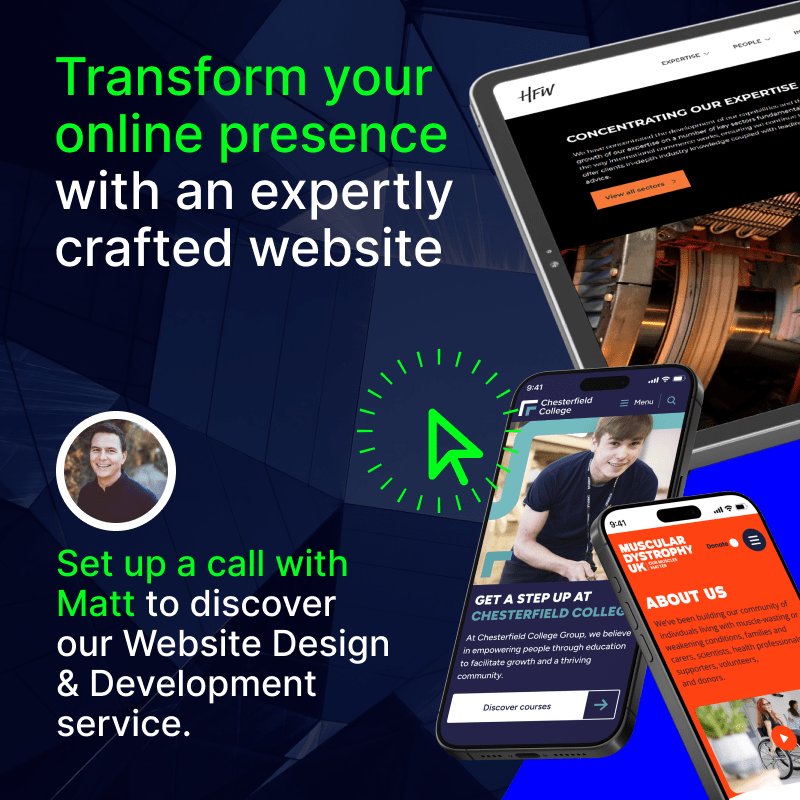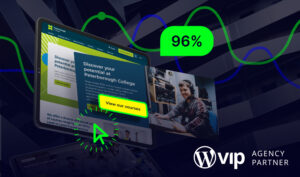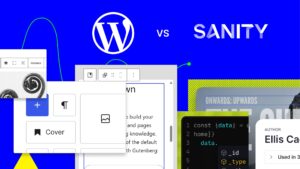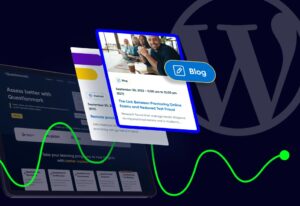Top WordPress Trends of 2025 That You Should Be Aware Of
The WordPress ecosystem is always evolving.
What started as a humble blogging platform is now a powerhouse CMS driving everything from global enterprise websites to advanced eCommerce and multisite experiences.
With WordPress’s great flexibility comes constant change. Staying on top of the latest WordPress trends is important if you want to keep your site fast, secure and future-proof.
Whether you’re a developer, marketer, content lead or digital decision-maker, understanding where WordPress is headed can help you make better choices now (and avoid expensive rebuilds later).
Here are some of the biggest WordPress trends shaping the way we build and manage WordPress sites.
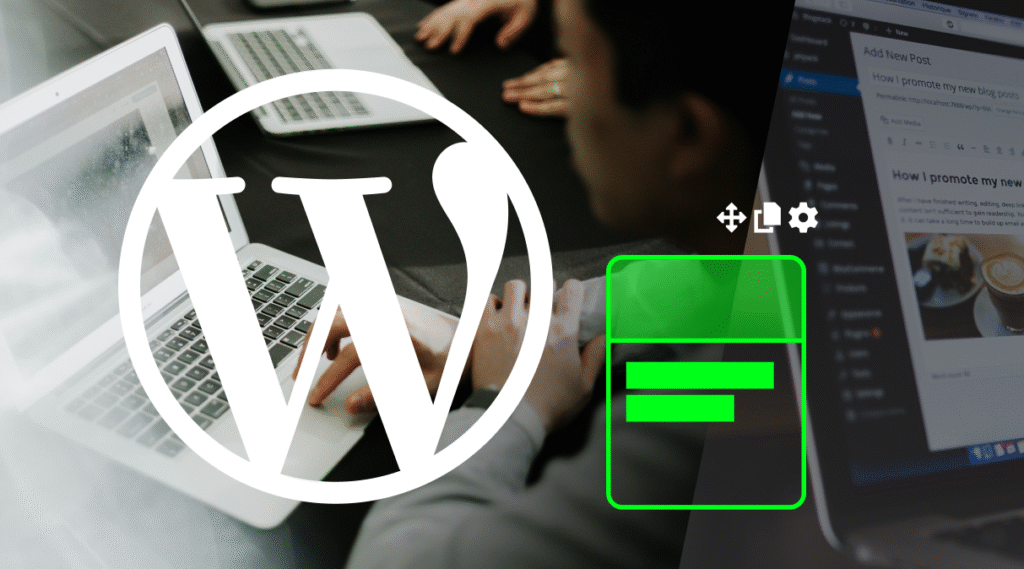
Mark Perry is a Digital Project Manager at Itineris, dedicated to fostering strong client relationships and driving success through innovative digital solutions. With a focus on clear communication and collaboration, he ensures every project aligns with client goals, delivering exceptional results and creating long-term value for all stakeholders.
- Headless WordPress
- Sustainable WordPress Website Design
- Block Editing and Full Site Themes
- AI Integration
- Website Accessibility
- Modern Architecture for Scalable WordPress Platforms
- Enterprise-Ready Workflows
- Enterprise WordPress Integrations
- WordPress Multisite for Global Brand Management
Headless WordPress
Headless WordPress has become an increasingly popular option for organisations with strong performance, flexibility and scalability demands.
As websites shift to more dynamic digital experiences, there’s an increasing need to decouple content management from presentation. Headless WordPress achieves this by separating the backend (WordPress) from the frontend.
This means faster load times, custom frontend experiences and seamless omnichannel publishing.
What’s changed with headless WordPress in 2025 is the maturity of tooling and workflows.
GraphQL support is more robust. REST APIs are more performant. And WordPress hosting providers, like Kinsta, now offer specialised headless setups with serverless deployment and edge caching built in.
Development teams can integrate WordPress into Jamstack architectures or larger microservice ecosystems without compromising editorial flexibility.
Organisations are using headless setups to unify their content across websites, apps, digital kiosks and even wearables. Multinational brands are scaling content delivery in dozens of languages, while internal product teams are spinning up SPAs that query WordPress as a content API.
This approach is fast and future-proof. It lets companies keep evolving without replatforming.
Still, going headless isn’t for everyone. It demands a stronger engineering culture and more complex deployment strategies. Teams must own their frontend stack and manage additional infrastructure.
But for enterprises with the right resources, headless WordPress opens up the doors to next-level performance, personalisation and developer freedom.
Sustainable WordPress Website Design
Sustainability in WordPress development has become a priority for many organisations. Not only for the environmental benefits, but sustainable website design also offers a superior user experience.
One of the biggest shifts right now is how performance optimisation aligns with sustainability goals. Lightweight themes, stripped-back plugins and cleaner codebases may be good for speed, but they also significantly reduce server strain and energy use.
Developers are also moving away from bloated page builders and embracing leaner frameworks like block-based themes and full site editing (more on this below). These enable more control over code and fewer unnecessary assets.
Media handling is another big area where WordPress is evolving. WordPress now supports next-gen formats like WebP and AVIF natively, helping reduce image payloads.
Paired with lazy loading and smarter asset management, this means smaller page weights and lower emissions per visit.
Hosting providers are also stepping up. More WordPress sites are moving to green data centres or providers that offset carbon emissions through verified climate schemes.
Caching, minification and database optimisation are all sustainability tools now. The less your site relies on dynamic requests and third-party scripts, the less energy it uses per page load.
Finally, sustainability supports longevity. A fast, efficient, well-built site needs fewer redesigns and less maintenance. That lowers total resource consumption over time.
For enterprise WordPress users, this also means lower long-term costs, improved scalability and better compliance as environmental standards evolve.
Block Editing and Full Site Themes
In 2025, the Gutenberg block editor has fully moved from “new feature” to foundational infrastructure. So much so that around 75% of WordPress users rely on the Gutenberg block editor for website design and customisation.
Full Site Editing (FSE) is now baked into how modern WordPress sites are designed and built. This allows developers and content teams to visually construct headers, footers, templates and theme layouts entirely with blocks.
We’re seeing widespread adoption across the WordPress ecosystem.
Theme and plugin developers are embracing the block-first approach, tooling for block development has matured, and design systems are increasingly driven by reusable patterns and template parts.
This shift is making it easier to standardise experiences across large sites. Doing so reduces design drift and simplifies maintenance.
Crucially, FSE isn’t just a win for developers. It also gives content teams more autonomy, reduces the need for custom theme work and brings design, content and code closer together.
For businesses, that means faster iteration, lower development overhead and a more agile web presence.
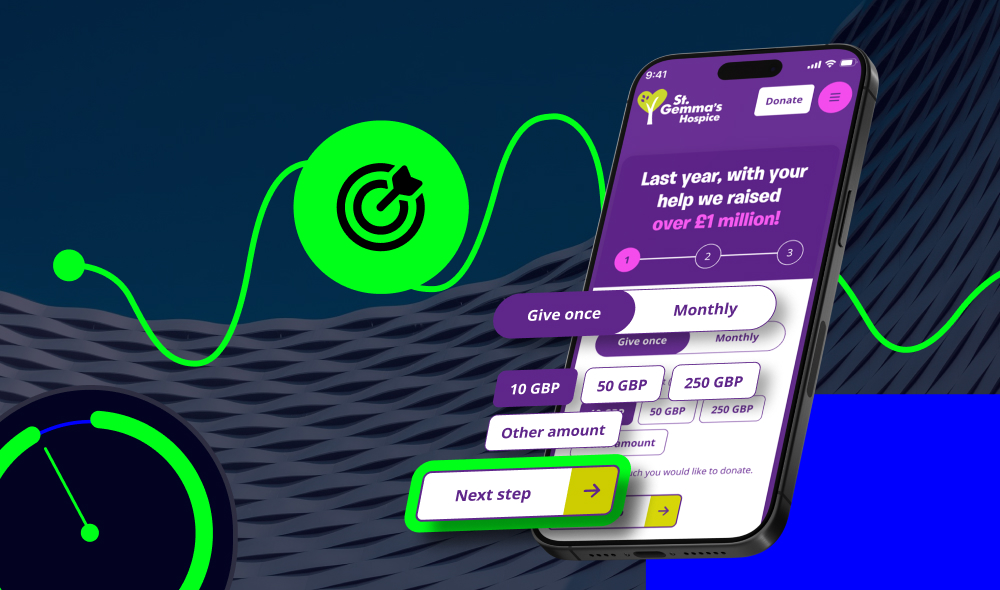
AI Integration
For a lot of us, AI is now a common part of our daily lives. It’s also commonly integrated into how the best WordPress websites are built, managed and optimised.
Before we cover this, let’s clear something up: AI is not replacing developers or marketers. Instead, it’s making them faster, sharper and more effective.
AI-powered dev tools like GitHub Copilot and AI-integrated IDEs now autocomplete code, spot bugs, refactor legacy PHP and generate custom blocks or unit tests.
On the content side, AI is transforming workflows. Integrated tools let marketers generate drafts, page copy, meta descriptions and SEO improvements directly inside WordPress. In fact, we can expect over 60% of WordPress sites to use AI for automated content generation and SEO optimisation.
This all speeds up production, eliminates blank-page syndrome and keeps messaging consistent across large, multi-page sites.
AI also plays a growing role in delivering more personalised, responsive websites. Smart systems can now tailor content, product recommendations or service offers based on user behaviour. If done right, doing so can boost engagement without manual effort.
Chatbots are evolving too. Many use large language models to manage natural, helpful conversations that reduce pressure on support teams.
Behind the scenes, AI is sharpening up security and performance for many sites. Machine learning can detect and block threats before they escalate, while intelligent caching and real-time optimisation can improve site speed. Tactics like this are especially useful for global audiences and enterprise-scale platforms.
But, of course, AI can cause you some serious headaches and site issues if you’re not careful. Poorly built plugins or misuse of AI can introduce data privacy risks or slow your site down.
Website Accessibility
Website accessibility is something no website owner can overlook.
The latest accessibility legislation from Europe is shifting expectations across the UK. Organisations that fail to keep pace risk falling behind in both compliance and customer experience.
For WordPress site owners, this means more than just ticking an accessibility box. It’s about embedding accessibility into your design, codebase and content from the ground up.
The Web Content Accessibility Guidelines (WCAG 2), set a rigorous standard.
WordPress development teams need to design for screen readers, ensure full keyboard navigation and avoid colour reliance for conveying meaning. That means semantic HTML, accessible ARIA labels, visible focus states and clear tab orders.
Every component must support assistive tech.
But it’s not just about technical compliance. Accessibility overlaps with usability. Features like logical page structure, clean navigation and readable typography improve experiences for everyone.
When WordPress sites are designed for people with ADHD, dyslexia or low vision, they also become faster to scan, easier to digest and more effective at converting.
Accessible websites also perform better. Recent studies show that optimising for accessibility improves organic traffic, bounce rates and time on site.
For WordPress users, that means integrating accessibility into SEO strategies, theme development and content workflows.
Plugins alone won’t fix the problem. Accessibility must be built into your design system and editorial approach.
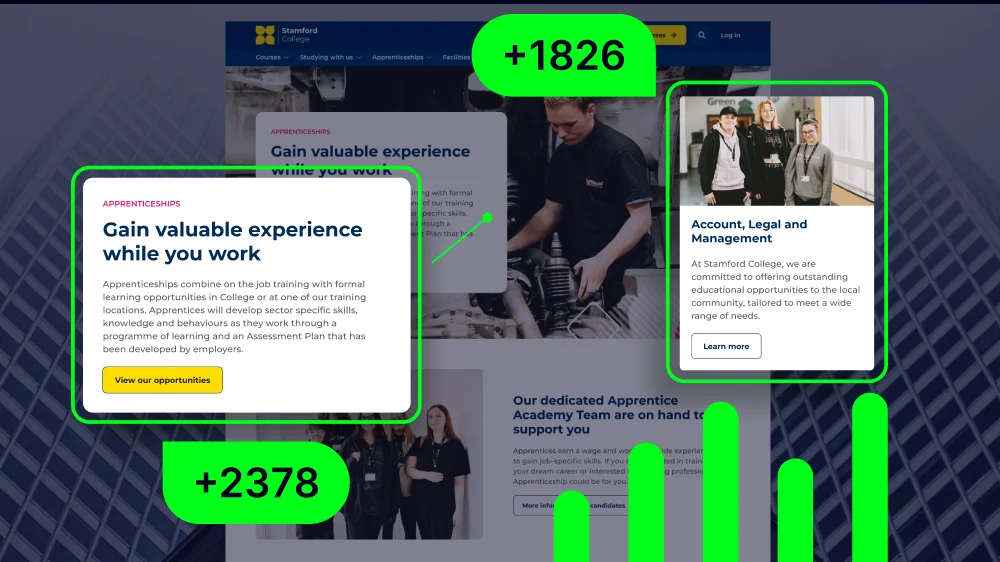
Modern Architecture for Scalable WordPress Platforms
When it comes to WordPress trends, we can’t ignore WordPress’s evolution toward modern software architecture. This includes component-based design, dependency injection and modular plugin structures — all elements that are transforming enterprise development.
Cleaner, testable code means better long-term maintainability, improved team onboarding and support for CI/CD workflows.
For large-scale organisations, this translates into faster iteration cycles and a futureproof foundation that scales with their needs.
Enterprise-Ready Workflows
In 2025, enterprise WordPress development isn’t just about writing code. It’s about building smart, scalable workflows. Workflows that ensure speed, quality and reliability.
More teams are embracing DevOps principles and modern tooling to streamline collaboration and reduce deployment risk.
Platforms like GitHub Actions, Docker, wp-env, and Local are becoming popular staples of the WordPress developer’s toolkit.
Continuous integration (CI) pipelines and automated testing catch issues early, while containerised environments make it easy to replicate staging and production setups locally.
This reduces the all-too-common “it worked on my machine” problem and speeds up feedback loops.
These mature workflows don’t just serve developers, but benefit the entire organisation. When releases are predictable and stable, teams can ship new features faster, iterate confidently and maintain site performance under pressure.
In short: if you’re building enterprise-scale WordPress, this level of operational maturity is more important than ever before.
Enterprise WordPress Integrations
Today’s enterprise websites are the digital front door to complex business systems.
So, ensuring seamless integration between WordPress and enterprise software like CRMs, ERPs, marketing automation tools and customer data platforms is a top priority.
Thanks to a more sophisticated plugin ecosystem and the growing use of custom APIs and GraphQL middleware, connecting WordPress with back-office systems has become easier and more reliable.
This allows real-time data to flow securely between systems — whether that’s syncing CRM data into lead capture forms or dynamically serving personalised content based on customer profiles.
The result? Content and marketing teams can act on up-to-date business intelligence directly within WordPress.
That means better customer experiences, more efficient workflows and campaigns that drive measurable value.
WordPress Multisite for Global Brand Management
For enterprises managing a portfolio of brands, markets or campaigns, WordPress Multisite has become a strategic enabler.
Far from being a niche feature, it’s now a cornerstone of global digital operations. Multisite offers a centralised, scalable way to manage dozens (or hundreds) of related sites within a single platform.
Multisite allows organisations to maintain brand consistency while giving local teams the flexibility to manage their own content.
Shared design systems, common plugin libraries and unified governance make it easier to roll out changes at scale without losing control.
Combined with stronger performance tooling, robust multilingual support and cloud infrastructure, Multisite supports everything from regional microsites and campaign hubs to departmental portals and franchise networks.
For complex digital ecosystems, it’s a powerful way to simplify operations without sacrificing agility.
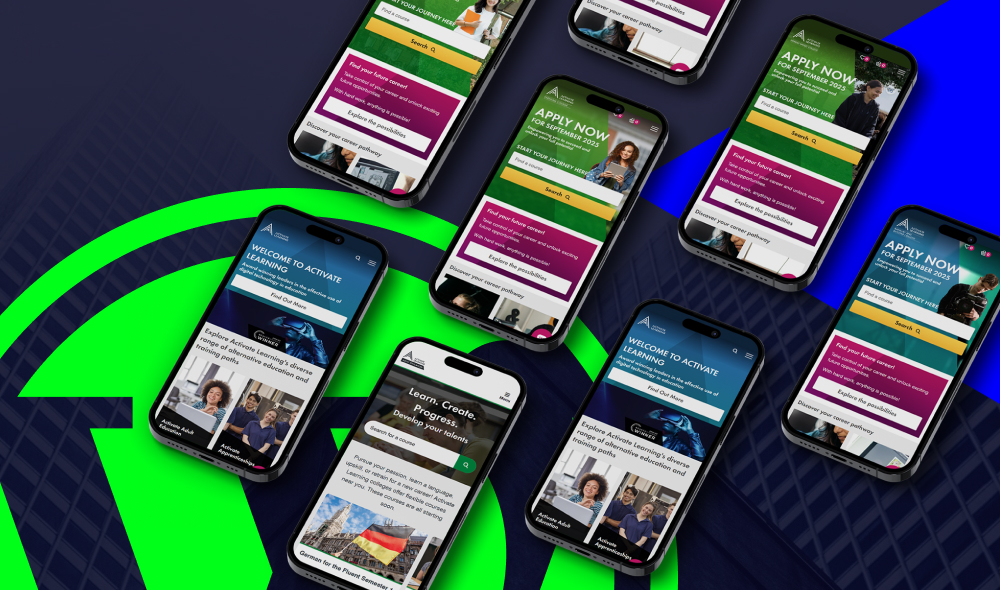
Keep Your WordPress Site Up to Date
WordPress in 2025 is leaner, smarter and more powerful — but only if you keep up with the latest trends and developments.
New tools and trends are changing how we build and manage websites, but the fundamentals haven’t gone out of fashion: speed, usability, scalability and great content still win. What’s different now is how accessible those goals have become.
But trends alone won’t future-proof your website. You need a clear strategy, thoughtful integrations and a willingness to evolve. If you’re still treating WordPress like it’s 2015, you’re not just missing out, you’re falling behind.
Now’s the time to rethink, rebuild and get ahead. We can help .
Get in touch with our team of expert WordPress developers to get your digital presence on track.

